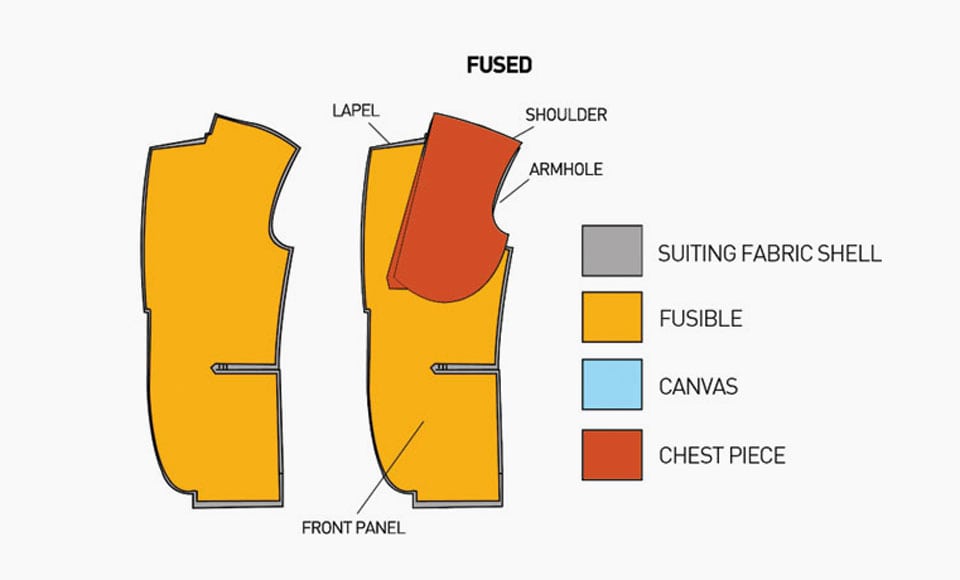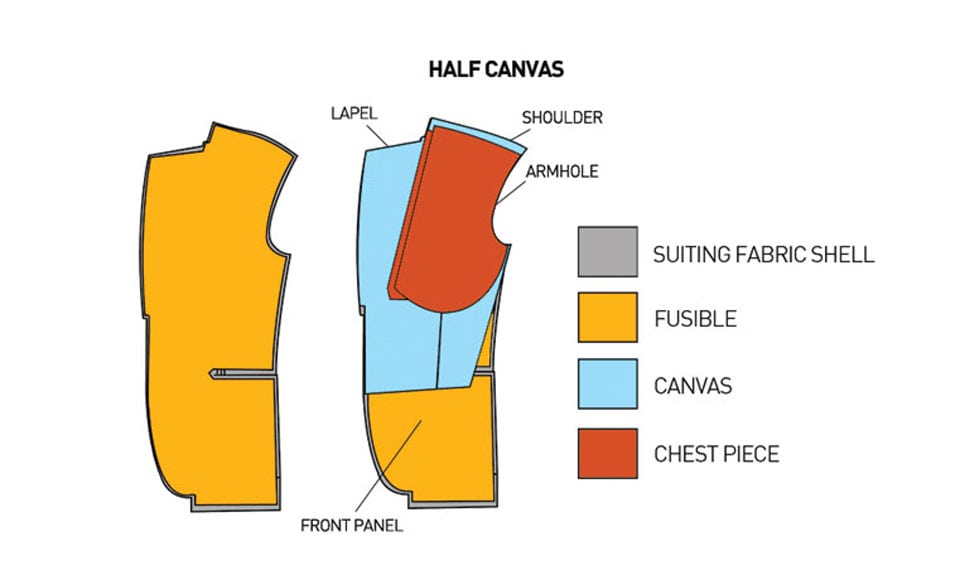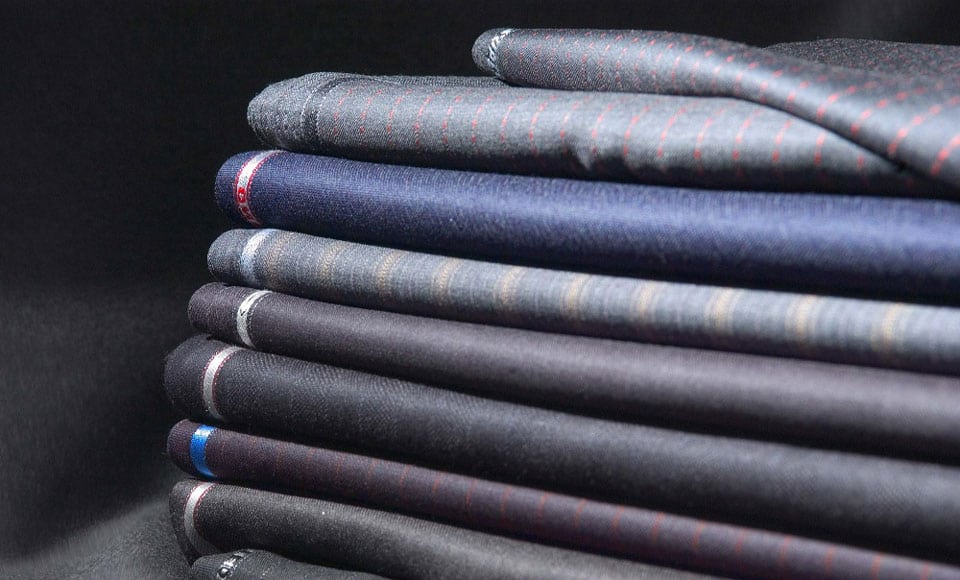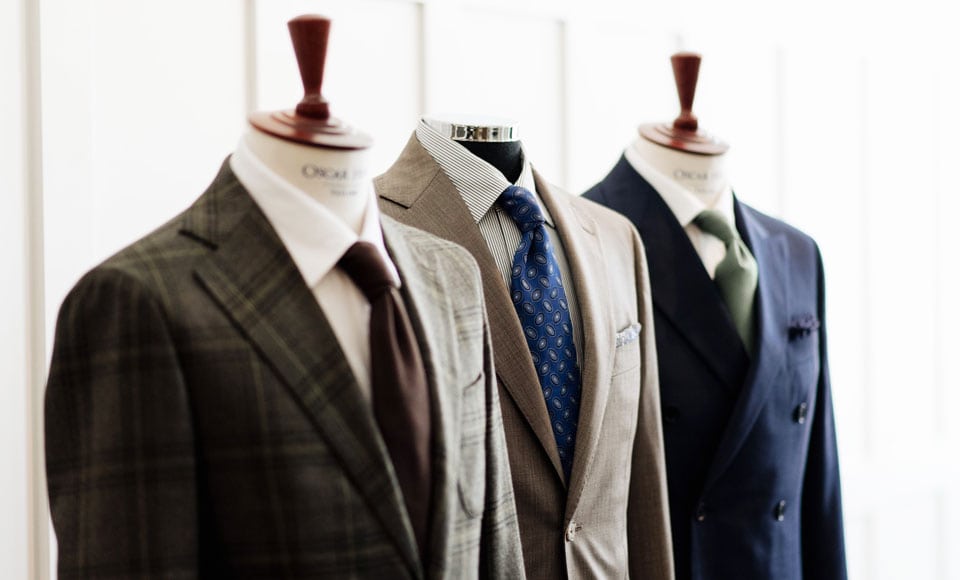The average Joe can be forgiven for not feeling the need to invest in an expensive suit. But who wants to be average? Despite luxury suits looking and feeling better than your fast-fash trash, one question remains: Why do some suits cost $100 and others $1000 or more?
It’s time to educate (and re-educate) some of you on the key factors that make up a men’s suit – finding one that meets your sartorial needs; whether you’re the cheap guy or the dapper gent.
Fabric quality is a suiting factor, which is easy to distinguish just by feel and having a basic understanding of natural vs. synthetic fibres. Then, there is the fit – with some brands producing ready-made suit jackets that naturally cut sharp on the shoulder and hug in on the waist.
But the more difficult (and most important) part to buying a suit is the actual construction. We’ve heard the terms full canvased, half canvas, and fused suits. Now, it’s time to adopt this language ourselves. Doing so will give increased understanding of what it is you’re truly buying and essentially, the craftsmanship you’re paying for.
In This Story…
Full Canvas

Canvassing refers to the suit jacket (not the pants). Running from the shoulder to the end of the jacket, the canvas is made up of horsehair, which sits underneath the shell (or outer fabric) of the jacket. Like a good pair of jeans, the canvas drapes well and moulds to your body over time; giving back freedom of movement and a personalised fit.
But with such impeccable craftsmanship comes a huge cost. Sewing the canvas under the shell is fickle, involves a lot of stitch work and it is time consuming. And there is an art to it, which means a qualified tailor is required and because of their skill, tailors cost money.
A full canvas jacket as part of a suit is an investment piece designed to last years, if taken care of. By sticking to neutral, classic hues such as black, blue and grey, the dollar-to-wear ratio of this suit (given you wear it for the rest of your life) proves it’s well worth the expense. And you’ll look killer, too.
Fused Suits

For the cheapsters among you, there’s the fused jacket, which parades itself on the racks of most high-street retailers and fast-fashion outlets. The fusing refers to the fusible lining of the suit, which is glued (not hand-stitched) to the shell of the suit – both in the front panels and in the lapels.
Compared to canvassing, the jacket is more rigid and won’t adjust to the body over time. But, fused suits are priced at a fraction of the cost of a canvassed one.
While fused jackets have vastly improved – like anything glued – the adhesive will break down with wear and dry cleaning over time. Aesthetically, the affordability of fused suits mean you can buy one without much thought and should experiment with on-trend colours and prints (like windowpane checks or green suit hues). It won’t matter if you get one or two season’s wear out of it, so go hard.
Half Canvas

You’ll find a sartorial middle-ground in the half canvased suit. It gives the structural benefit of a full canvas but without the mass investment. A half canvased suit uses a sewn-in canvas piece in the chest and the lapel of the jacket, and is fused on the bottom part of the jacket.
This allows you to have the canvassed structure at the most important part of the suit – the shoulder – and keeps the price down by having less handiwork in the remainder.
The construction allows the suit to drape naturally over your chest without seeming stiff, which is what happens with a fused suit. These jackets also last longer, and are void of bubbling issues that come up over time with fused jackets, as the glue breaks down.
If you’re inclined to stock up on few work suits – in different colours and patterns, then half canvas might be best for you and your wallet. And, its structure sees you get the workmanship of a tailor across the top part of the jacket without dissolving your potential savings for a house deposit.
Wool Vs. Cashmere

Wool is the most common suit fabric and comes in two main yarn varieties: worsted (where the fibres are combed before spinning) and woollen (non-combed). In a nutshell, wool is woven to form your traditional flannel, tweed, gabardine and fresco cloths.
Superwool is a term thrown around a lot, too. Super 100 to 180 (going up in increments of 20), the number refers to how many times the worsted wool has been twisted when it is made. The higher the number, the finer and lighter the cloth will be, and the more expensive the suit is.
But lighter woollen suits (Super 140, 160, or 180) don’t keep their shape as well. Nor are they as durable. Anything above a 140 should be kept for special occasions, as the cloth is much finer than a more conventional Super 100. A high Super is high maintenance, so prepare yourself before you buy.
Most of your canvassed suits will be made from wool, as the luxury of the fabric goes with the intricate construction of the jacket. When going for a non-canvassed jacket, opt for a heavier weight wool too, such as a tweed or an English wool. These drape better over your body and give more of a structured look, but the price will be pushed up, due to the wool content.
A cashmere-blend is a more luxurious version of the woollen suit. Cashmere comes from the soft undercoat of goats bred to produce the wool. And, it’s a laborious, handmade job extracting the wool, and then combing it into a yarn for suits. Thus, it’s expensive. Very Italian, cashmere does give a nice sheen to a suit but if it’s not your cup of tea, stick to the more English matte wools or cottons.
Cotton Vs. Linen Vs. Seersucker

Cotton is the second most popular fabric for suits and is derived from plant fibres. Cotton suits move and breathe well, and are satisfactory for softness. But, cotton lags behind in the luxury department when compared to wool fabrics.
Ideal for summer months, linen is light, airy and breathes well, due to its porous structure. But, it creases easily. Understanding that crinkles add character does help linen’s cause. But essentially, it’s an off-duty suit; canvassed or fused. A little tip: stick to heavier linens, to maintain form and drape.
Seersucker is another favourite for the warmer months. It is woven in a ‘bunched’ manner, giving it a wrinkled appearance. Forming part of the charm, the bumps should be embraced for the casualness that they are.
The Low Down On Synthetic Fabrics

These are the cheap fabrics and include polyester, rayon, and acetate. They are not natural fibres so they aren’t breathable, making them difficult to wear in summer. And synthetics are more rigid and look ‘cheap’ to look at. Most fused suits will be made of synthetic fabrics, with the wool or cotton content rising in correlation with the price. The only advantage about this fabric is that they are wrinkle free and are quite durable.
A Suit Maker’s Expert Opinion
Usually the cheaper the suit price, the cheaper the fabric and make. Essentially, with an expensive suit you can expect to study three key components: fabric, fit, & make. However, it is possible to have good fit in a cheaper suit, not in all cases but it is possible.
With regards to lifespan, it depends on which brands you look at. For example, big international brands -where your paying over $1500 usually have a shorter lifespan because of the delicate and fine fabrics that they use. So, these products should be worn sparingly.
What we provide for our domestic market is somewhere in the middle. Where you use fine high quality fabrics and make, with the bonus of durability and a lifespan in keeping with a premium branded product. This is what today’s consumer expects.
Dom Bagnato – Designer/Director
Cheap & Expensive Suit FAQ
[wp-faq-schema]
